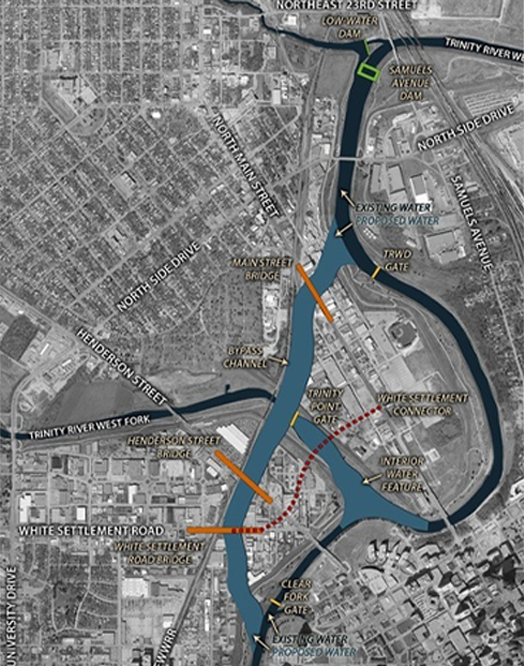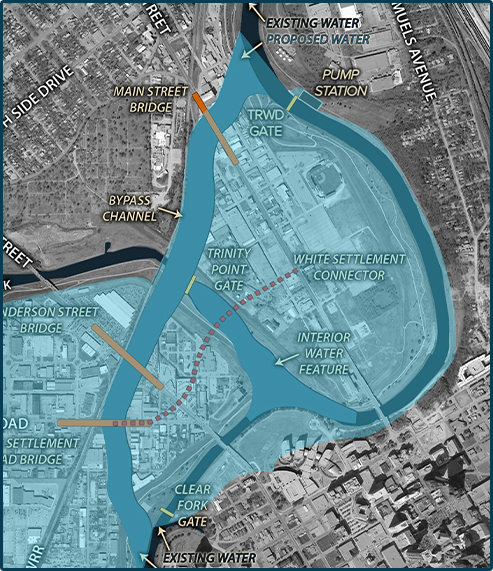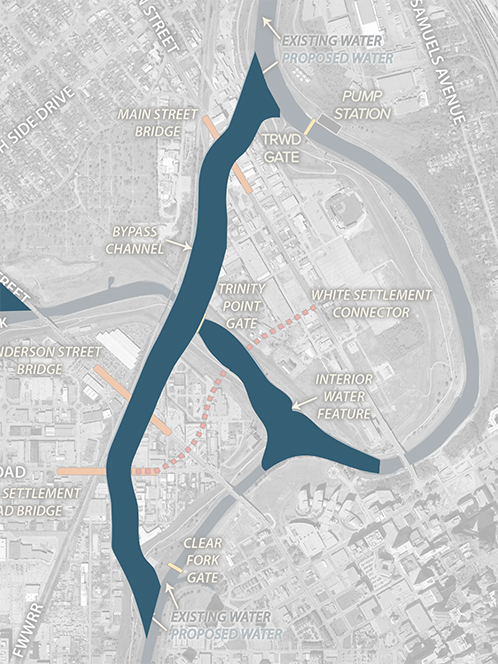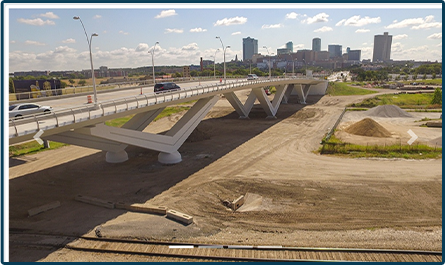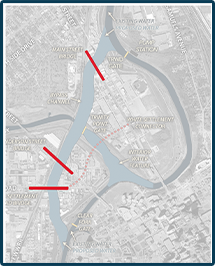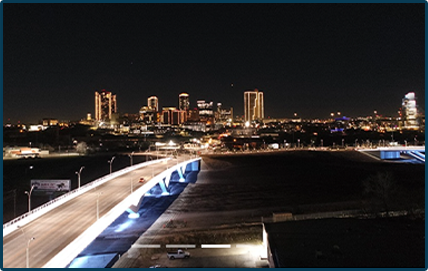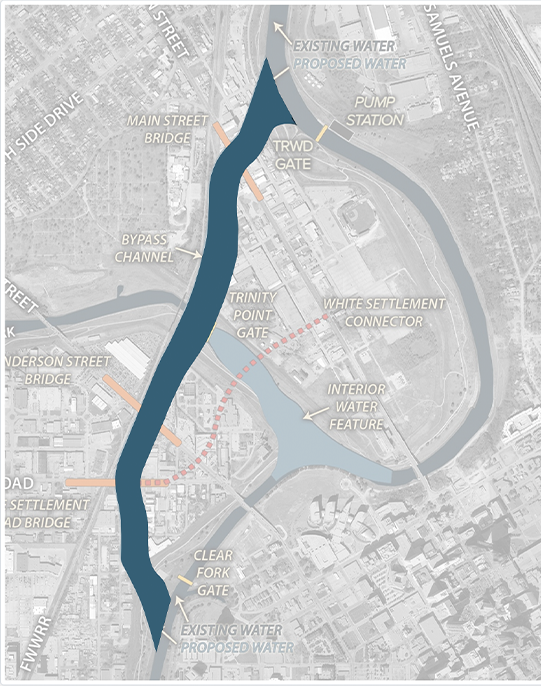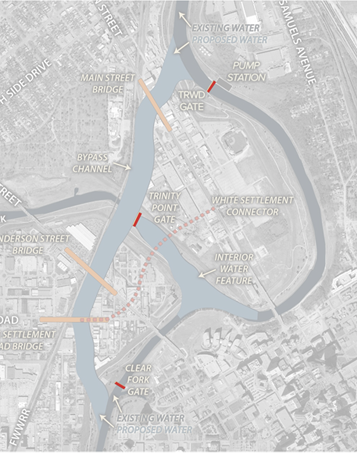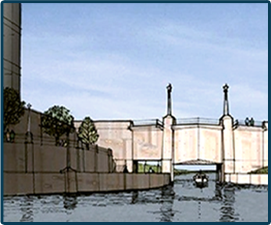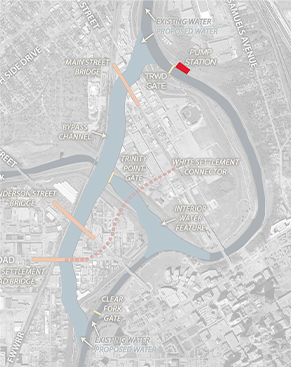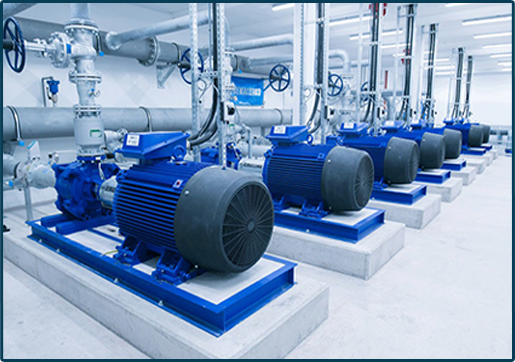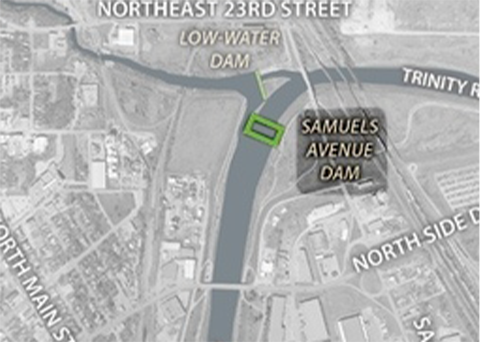USACE FLOOD WATER STORAGE
Flood water storage is a critical need for our community right now providing immediate flood relief. With that in mind, USACE has completed four flood water storage construction sites to date, totaling more than $32 million in USACE contracts and the removal of over 2 million square yards of dirt.
The future bypass channel will protect more than 2,400 acres of neighborhoods in Fort Worth from the highest level of flooding. However, the bypass channel cannot accomplish this alone. In times of flooding, water will be moving through the bypass channel, but there is a need to slow that water down to prevent flooding our neighbors to the east. A series of flood water storage sites are crucial to the Central City Flood Control Project.
The amount of material moved as well as the locations themselves were carefully chosen. These sites provide the needed flood protection along with providing multiple-use opportunities. In many cases USACE will excavate the site (Gateway Park for example) allowing that area to be turned over to the City of Fort Worth to provide wonderful park amenities for our city.








